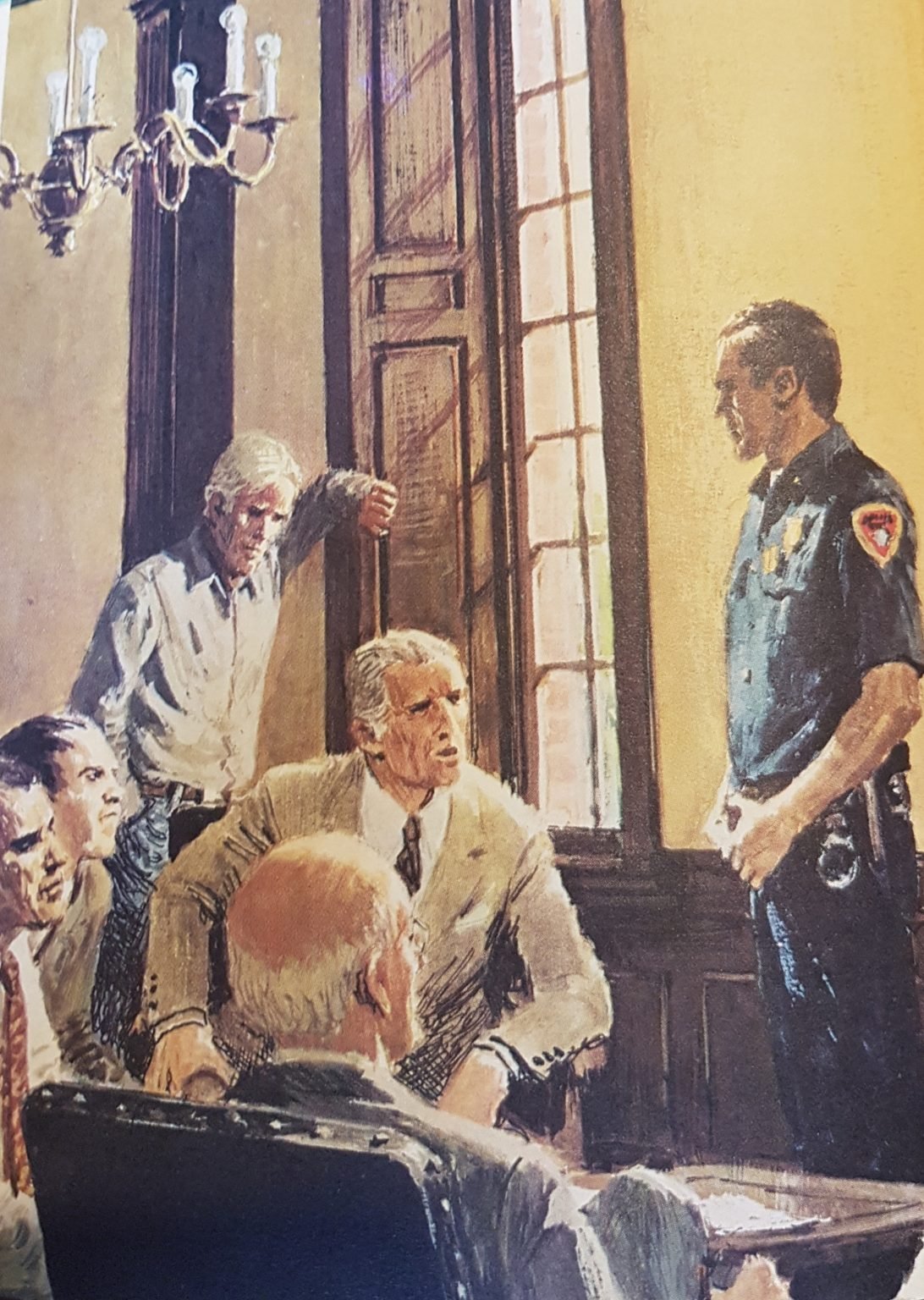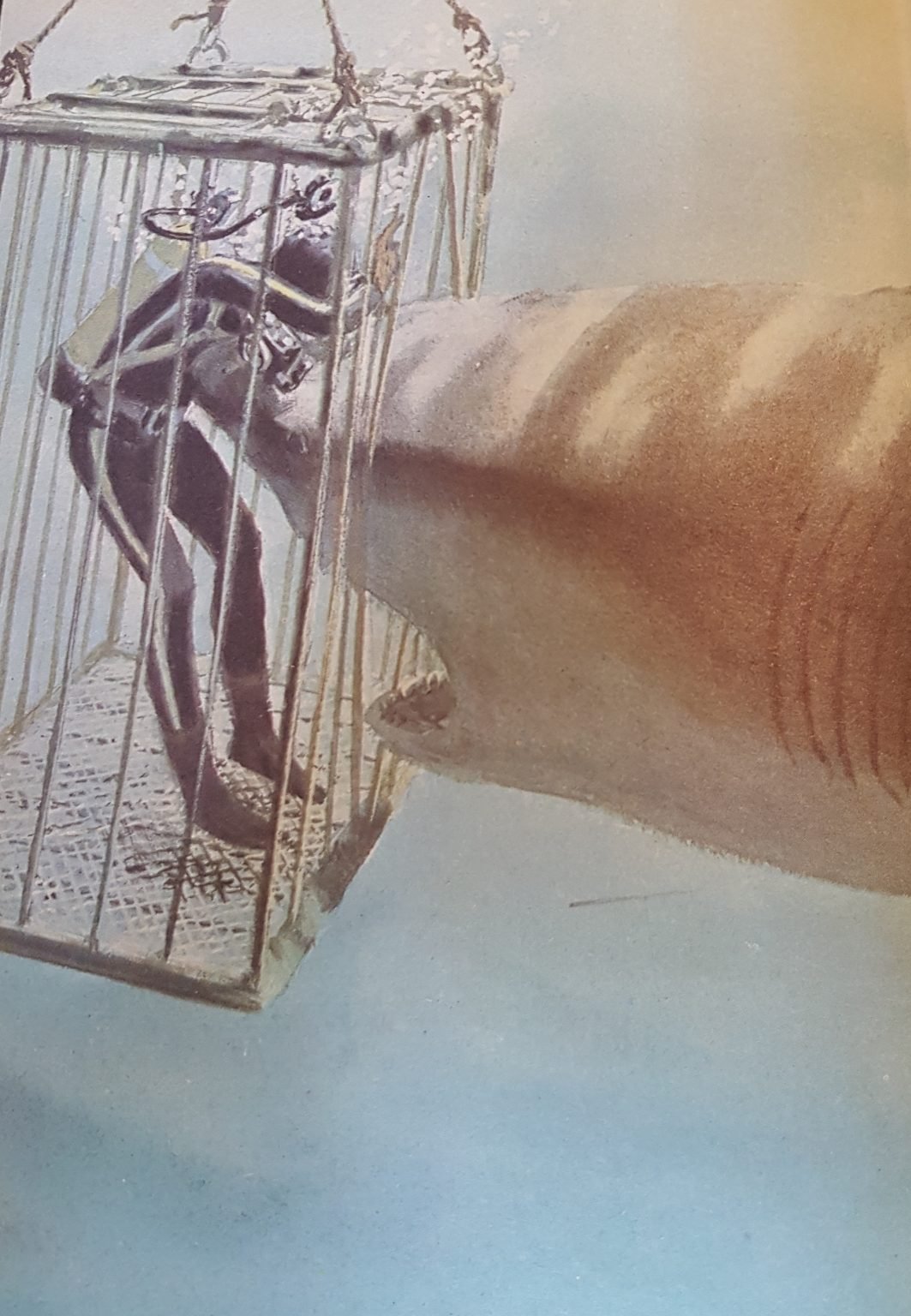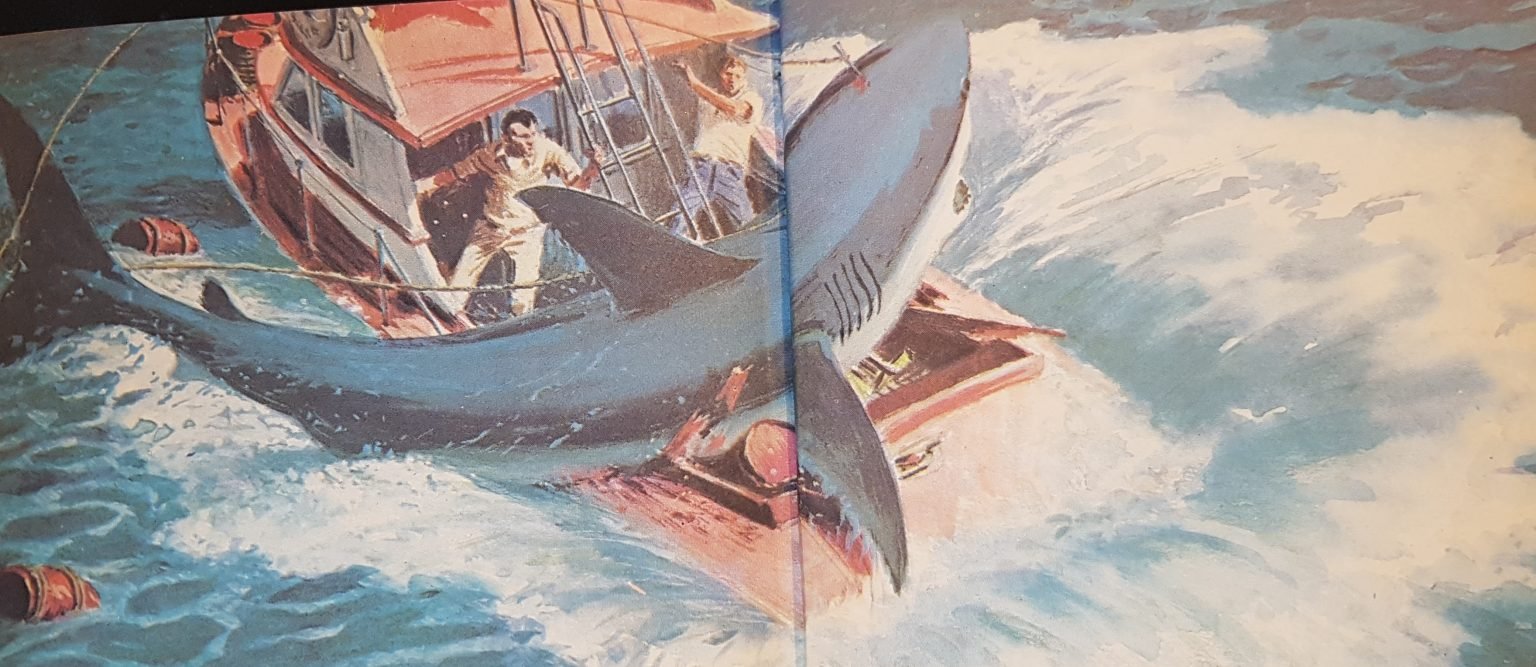Illustrations from the Reader’s Digest version of “JAWS”
These paintings were featured in the 1974 Reader's Digest edition, which presented an abridged version of Peter Benchley's 'Jaws.' What makes this particularly intriguing is that it predates the release of the movie, which means readers didn't have preconceived images of the characters. Additionally, there are some illustrations depicting scenes not seen in the film or with significant variations.
Stanley Galli, known for his contributions to the Saturday Evening Post, is the talented artist behind these paintings.
While capturing these pages, I faced challenges due to the book's binding, and I took great care to avoid any damage to the volume."
Chrissie finds herself in the path of the oncoming shark during her midnight swim. It's important to note that the initial shark depiction doesn't closely resemble a Great White, but the artist noticeably improves in later illustrations.
"The first chapter features this "Beach Closed" illustration."
Quint, as described in the unabridged version, is completely bald, but this detail is missing in the condensed version. In this illustration, he is depicted with a dark complexion and a widow's peak. Hooper closely resembles the book's description and is notably different from the movie portrayal. It's quite a departure from the on-screen versions of Lorraine Gary and Richard Dreyfuss, making it hard to imagine them engaged in an extramarital affair like the Hooper depicted here."
"Mrs. Kintner appears noticeably younger in this depiction, defying the expectations of viewers. Many who watch the movie tend to comment, "Is she the child's grandmother?" upon seeing her."
"The dinner party in the book is a far more extended and intricate sequence compared to the brief one in the movie, providing additional background on Hooper. The guest list includes Hooper, Meadows, his wife, and a local girl. Brody becomes inebriated, while Ellen grapples with her disappointment over being unable to rekindle her past life as a wealthy New York socialite due to her marriage to a local Amity policeman."
In the book, this scene held a significantly more sinister tone. Meadows interrupted it by calling Brody to reveal Vaughn's entanglements with the Mafia, which were coercing him to reopen the beaches. Notably, this entire subplot is missing from the movie.
This particular event is entirely omitted from the movie. In this scene from the book, a dare between two teenagers unfolds after Brody succumbs to pressure and reopens the beaches. One teen challenges the other to swim approximately 100 yards for a $10 wager. When the dare is accepted, a shark emerges, prompting Brody to plunge into the water to assist the struggling teenager to safety. Following this incident, the beaches are promptly closed. Unlike in the movie, there is no July 4th beachside panic.
In the book, the shark assaults Hooper's cage and ultimately devours him. I've consistently held the view that the movie made an error in not having Hooper perish in his endeavor to eliminate the shark. His survival appeared forced and superfluous.
The shark leaps out of the water, capsizing the 'Orca,' mirroring the events in the book. However, unlike the movie, in the book, Quint becomes ensnared in the harpoon line and is dragged overboard, not meeting the same dramatic fate of being devoured.
In the book, Brody emerges as the sole survivor and eventually finds his way home on the very flotation cushions Hendricks had earlier described as, 'They would hold you up, if you were an eight-year-old boy.'
Overall, this is one of those rare instances where the movie surpasses the book. In the book, none of the characters are particularly likable. Brody struggles with closing the beaches and becomes preoccupied with suspicions about Hooper's involvement with his wife. Hooper, on the other hand, engages in a tryst with Ellen, initiated by her. Quint is obsessively fixated on killing the shark to the exclusion of all else. None of them come across as sympathetic figures for the reader to root for. Yet, Carl Gottlieb and Spielberg, writing the script on the fly every night due to unworkable initial drafts, managed to craft a gripping narrative. Even more impressively, they successfully adapted to the mechanical shark's malfunctions, which resulted in far fewer scenes with it than originally planned.










